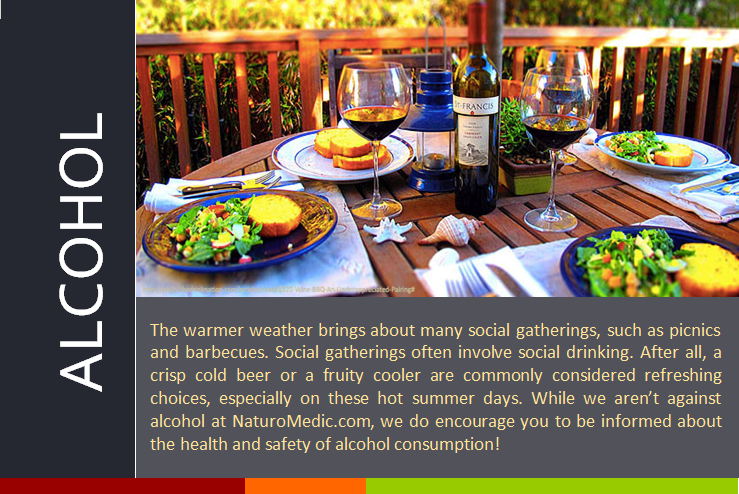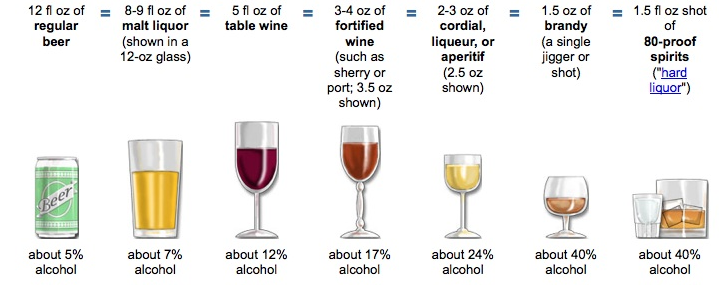
The fine line between healthy and harmful
The warmer weather brings about many social gatherings, such as picnics and barbecues. Social gatherings often involve social drinking. After all, a crisp cold beer or a fruity cooler are commonly considered refreshing choices, especially on these hot summer days. While we aren’t against alcohol at NaturoMedic.com, we do encourage you to be informed about the health and safety of alcohol consumption!
To date, it is unclear what is considered a safe amount of alcohol. Many studies have shown that moderate consumption can be beneficial for heart health, particularly in increasing HDL (good) cholesterol and diminishing plaque in the arteries. On the other hand, too much alcohol leads to many health problems, including damage to the heart and liver, hypertension, stroke, and fatty liver disease. Alcohol can also drop blood sugar and has been linked to several forms of cancer. To reap the antioxidant benefits of alcohol, one drink or less per day is suggested. More than 3 drinks in a day are toxic to the body.
What is a Standard Drink?

Alcohol intake tends to be measured by the number of drinks one has. Unfortunately, this doesn’t actually mean anything unless the size of the beverage corresponds to “standard drink” volumes. Check out the image on the left for more accurate drink sizes.

Around the World

In 2014, the Organization for Economic Co-operation and Development (OECP) ranked several countries based on their annual per capita alcohol consumption (in liters). The countries with the highest consumption were Estonia, Austria, France, Ireland,and Czech Republic. Beer was the leading type of alcohol consumed in these countries, with the exception of wine in France. The average volume of alcohol per person in the top 5 countries ranged from 11.5 to 12.3 L, while the US and Canada consumed 8.6 and 8.0 L per capita. The United States and Canada ranked 22nd and 25th respectively, with both having much more beer consumed over wine and spirits.
What’s in your drink?
Having a glass or two of wine with dinner every day may seem like a heart-healthy option, but it is easy to forget how many extra calories you are consuming. These are often referred to as “empty” calories, because they provide very few nutrients for your body. If you are watching your waistline or trying to lose weight, it is important to consider liquid calories, especially those from alcohol.
Another factor to consider is the sweetness of a drink. Dry wines have less bricks of sugar than do sweeter wines, meaning that they have fewer grams of carbs and are lower in calories. Consider how many calories might be in a single serving of Port or Icewine! Below is a brief summary of calories found in different types of alcohol. Mixed drinks (such as a rum and coke) have added calories from juice, pop, or syrups. For a lighter option, vodka/soda with lime, gin/tonic, light beer, or dry wines, have fewer calories.


In comparison to wine and beer, hard liquor contains fewer
calories per serving (1.5 ounces). This is because there are no
carbs (and therefore no sugar) in these forms of alcohol. For
example, one serving of 40% vodka (Smirnoff) has 97 calories,
45.5% whiskey (Jack Daniels) has 98 calories, and 35% rum
(Captain Morgan) is only 86 calories.


